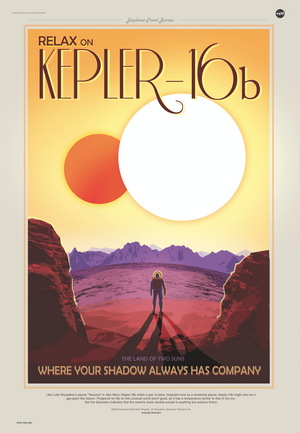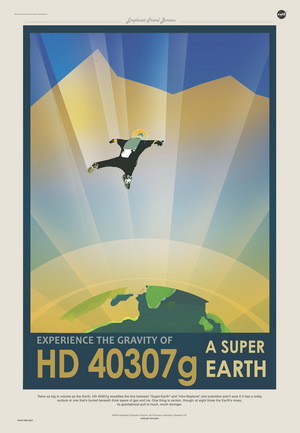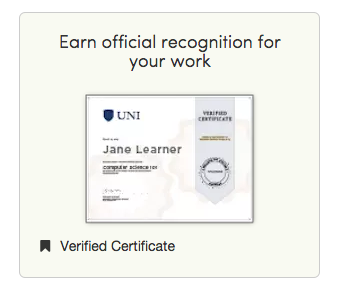-

-

-

-

-

-

-

-

-

-

-
-

-

-

-

-

-

-

-

-

-

-

-

-

-

-

-

-

-

-

-

-

-

-

-

-

-

-

-

-

-

-
-

-

-
 TOTW: Google's Project Ara Modular Phone May Be The Future Of SmartphonesOctober 30, 2014
TOTW: Google's Project Ara Modular Phone May Be The Future Of SmartphonesOctober 30, 2014 -

-

-

-

-

-

-

-

-

-

-

-

-

-

-
-
-

-

-

-

-

-

-

-

-

Posts tagged NewsNow Technology
The Simulation Argument Part #2 – The Hypothesis Explained
010 years
This is the second article in a two-part FFtech series on The Simulation Argument. If you haven’t already read the first article go HERE before reading the following.
In the previous FFtech article on the Simulation Argument, we established that Bostrom’s statement that the first proposition is false is a reasonable assumption. Just to remind you, these are the propositions, and one has to be true:
#1. Civilizations inevitably go extinct before reaching “technological maturity,” the time at which civilization can create a simulation complex enough to simulate conscious human beings. Meaning: no simulations.
#2. Civilizations can reach technological maturity, but those who do have no interest in creating a simulation that houses a world full of conscious humans. Meaning: no simulations. Not even one.
#3. We are almost certainly living in a simulation.
Now, on to the second postulate. Since that we have decided that there are quite likely alien civilizations in the universe that have developed an ability to create “ancestor simulations”, as Bostrom likes to call them, the second postulate says that the alien civilizations just have to interest in creating a simulation of fully conscious human beings. Most likely, a civilization creating a simulation of how humans lived before they reached “technological maturity” will be future humans, as it is less likely that we will have met an alien civilization before develop the capacity to create an ancestor simulation of our own, as the distance from another habitable stars is simply too far away.
(ABOVE: Some very cool illustrations of hypothetical travel ads for habitable planets found with the Kepler satellite)
However the simulation is created, it seems much more likely that at least one alien starts a simulation. If current trends continue, such as the a definitive interest in our ancestors shown in the multitude of historical studies, there will be plenty of people who would like to simulate how their ancestors lived. I know that I would find a simulation of a Greek town fascinating, for example. The idea that not a single person would want to create a simulation seems unlikely, and so therefore the second postulate is likely false.
So, Bostrom’s first postulate is probably false, and the second postulate is just plain unlikely by human (and, more arguably, alien) nature. Based off of that, do we now live in a simulation? Well, not yet. Just because and ancestor simulation exists doesn’t mean that you’re living in it. First, you have to consider the virtual “birth rate” of these simulations. Bostrom also supposes that it takes a lot more effort and time to create a real human than it would a virtual one once a sufficiently advanced technology is developed. Therefore, the ancestor simulation (or simulations) could have many orders of magnitude more virtual humans living inside it then are actual humans, living outside the computer and controlling the simulation. So, if there are thirty virtual humans for every real human, or even numbers up to 1,000 virtual humans to every human, that means the probability that you are one of the few “real” humans rather than a simulated human is very low.
And that, my friends, is the simulation hypothesis.
Of course, there are many assumptions made here, some clear and others subtle, some of which could be used to attack Bostrom’s argument. For instance, one of the major assumptions that Bostrom makes is what he calls “Substrate Independence”. Substrate Independence is the idea that a working, conscious brain can, as he writes in his original paper,
” …supervene on any of a broad class of physical substrates. Provided a system implements the right sort of computational structures and processes, it can be associated with conscious experiences. It is not an essential property of consciousness that it is implemented on carbon-based biological neural networks inside a cranium: silicon-based processors inside a computer could in principle do the trick as well.
Basically, Substrate Independence is the idea that consciousness can take many forms, only one of which is carbon-based biological neural networks. This form of Substrate Independence is pretty hard grasp, which is why Bostrom argues that the full form of Substrate Independence isn’t actually needed for an ancestor simulation. Really, the only form of Substrate Independence needed to create an ancestor simulation is a computer program running well enough to pass the Turing Test with flying colors.
Besides Substrate Independence, most of the rest of the Simulation Argument is fairly simple. Since we have already deduced that there is likely to be at least one ancestor simulation in existence, the likelihood that we are living in that simulation is pretty high. The logic behind this is that the ancestor simulation doesn’t have a set birth rate that can’t be manipulated. The simulation could have as many simulated people in it as they want – though this is stated as obvious, when it is also debatable — and there would be many orders of magnitude more simulated people than actual human people not in a simulation, and even more if there are multiple simulations running at the same time. The present-day parallel is to online video games MMORPGs, which are constantly getting bigger and bigger, with many more characters made in those games than real humans born every second.
Obviously, this argument is very speculative. Substrate Independence, ancestor simulations, the whole thing; it just all seems too far-fetched to be true. And, after all, Bostrom isn’t a computer scientist, he’s works at the Faculty of Philosophy in Oxford. But, that doesn’t mean his argument is false by nature, as in his original paper he goes into incredible detail about computing power, Substrate Independence, and even creates a mathematical formula for calculating the probability we live in a simulation. In fact, if we want to get technical, Bostrom categorizes what I have told you so far as the Simulation Hypothesis, and the full Simulation Argument being the probability equation Bostrom created, some “empirical” facts, and relation to unrefutable philosophical principles. If you want to read Bostrom brilliant albeit a little wordy paper, click HERE.
To sum it up: a man named Nick Bostrom created a series of logical “propositions” that, when examined closely, seem to suggest that there is a very high probability that we are living in a simulation. In fact, the probability is so high that to close his paper, Bostrom writes:
“Unless we are now living in a simulation, our descendants will almost certainly never run an ancestor simulation.”
You may take knowing this however you want. Personally, I think the simulation argument is one of the coolest things to ever come out of philosophy. And if it’s true, that we live in a simulation, that only makes it cooler. After all, we will never know for sure whether we live in a simulation or not, and either way, it doesn’t affect your life the slightest. You have no choice but to continue living your life as you did, maybe in a simulation, maybe not. All this shows is that as technology continues to develop at a rapid pace, we are getting closer and closer to even the wildest of science fiction technologies to become a reality.
Sources: https://www.youtube.com/watch?v=nnl6nY8YKHs http://www.simulation-argument.com/simulation.htmlThe Simulation Argument Part #1 – The First Proposition
010 years
This is the first article in FFtech’s series on The Simulation Argument. Enjoy, and check back for the following articles in the upcoming weeks.
*Warning – the following is incredibly speculative.*
Life seems real, right? This sounds like an obvious statement – of course life is real. That’s what life is. We are living, breathing humans, going about our daily lives, playing our part in the grand theater of life.
Or so we think.
Ok ok, I’ll stop being dramatic. This isn’t what you think; I’m not going to tell you that you’re a reincarnation of a turtle, or that you’re a ghost or spirit. But what I’m going to propose may seem even more preposterous. Brace for it. Ready? Using logical steps, some are arguing that they can prove the likelihood that we are living purely in a simulation is very high.
Whaaaat?? How could we possibly be living in a simulation, with just a bunch of code constituting our entire existence? This idea, famously popularized in the film The Matrix, now has a rigorous scientific argument, created by Nick Bostrom. For Bostrom however, instead of humans being controlled by aliens in a sci-fi thriller, the Simulation Argument conducts a sequence of logical steps in an effort to demonstrate that there is a greater chance than we might think that we are living in a simulation. The argument Bostom put together has three propositions, one of which must be true:
#1. Civilizations inevitably go extinct before reaching “technological maturity,” the time at which civilization can create a simulation complex enough to simulate conscious human beings. Meaning: no simulations.
#2. Civilizations can reach technological maturity, but those who do have no interest in creating a simulation that houses a world full of conscious humans. Meaning: no simulations. Not even one.
#3. We are almost certainly living in a simulation.
Hold it right there, you may be saying. It’s obvious that the first one it true, meaning we couldn’t be able to be in a simulation. That statement, that the first postulate is false, seems logical, but when put through a bunch of philosophical hurdles, doesn’t hold water. The reason that #1 is probably wrong is that the likelihood of sophisticated alien civilizations existing is actually quite high. Although beyond the scope of this article, the vast number of habitable planets, including planets outside of the Habitable Zone but that still may harbor life, is extremely large. Somewhere in the universe, intelligent life must have evolved. Once we have accepted that conclusion, it becomes less likely that this stage of development is unreachable by any one of these civilizations. From an evolutionary perspective, we as humans on Earth are arguably not too far away from being able to simulate a full chemical human mind, and within say 100-1,000 years we may have developed such a simulation similar to the one Bostom is hypothesizing.
One of the main principles of science, as the great Carl Sagan says in his quote The Pale Blue Dot, is the fact that humans on Earth aren’t special, chosen to be the singular life form in the universe. The Milky Way isn’t special at all – quite ordinary among galaxies in fact. If every other alien civilization becomes extinct within 100-1,000 years of our level of technological development, it would certainly make us one very special species. It seems much more likely that at least one civilization, whether it is future humans ourselves or an alien species, develops to this advanced level of sophistication. Thus after some considerable mental wrestling, the first postulate is deemed by Bostom to be most likely false.
But, as even Bostom himself admitted, we don’t have fully sufficient evidence against any of the first two arguments to completely rule them out. There are plenty of theories that favor a hypothetical “Great Sieve”, some event that will happen to every advanced civilization in the universe that drives them to extinction, and that will do the same to us once we reach that stage. Maybe it will be a technology that, once discovered, causes every civilization to ultimately destroy themselves. (e.g., genetic manipulation, nuclear power and weapons, bio-engineering diseases, etc.) The Great Sieve has also been used as an explanation for why there haven’t already detected some type of alien life forms, but the jury is still out on that one. Whatever the Great Sieve may actually be, we still don’t have our complete confidence in saying that the first postulate is 100% wrong. But, in the absence of any conclusive argument for a “Great Sieve”, we will for now follow along with Bostom and say the first postulate should be false.
This is the first big step in the Simulation Argument. The rest of the argument is built upon the idea that alien civilizations could actually develop and use ancestor simulations. This isn’t a small step to make, and it draws in many other philosophical complications, for instance, is creating a conscious computer program as easy as replicating a human brain in code, or is there more to it? I’ll get into this and more in the next installment of FFtech’s Simulation Argument series, so check back soon.
Sources: https://www.youtube.com/watch?v=nnl6nY8YKHs http://www.simulation-argument.com/simulation.html
The Dictionary Of Obscure Sorrows Creates Words For Unnamed Feelings
010 years
The Internet is full of surprises. One of these pleasant oases of intelligence, creativity and artistic genius is the website & YouTube channel The Dictionary Of Obscure Sorrows. The Dictionary Of Obscure Sorrows is a fairly unknown website that posts incredibly inspiring, thoughtful and philosophically profound pieces of writing and video. The great writing, paired with the great editing and unique film work on the channel, makes me surprised this channel isn’t more popular. Started as a website, The Dictionary of Obscure Sorrows is, well, pretty much what it says. Created by John Koenig, a writer and graphic designer, The Dictionary is a collection of words, created by John, that describes emotions, experiences, and sorrows for which there aren’t currently words for where there really should be.
On his journey, John has tackles some philosophically profound topics, leaving you with a sense of wonder that someone could so accurately describe one event or another in your life, and wrap it up in one word. And although the words John creates are just from his mind, and aren’t actual words, I hope writers will start using them, as they seriously need to be integrated into our language. And, if you research a little, you can see that he actually uses other languages, mythology, and more to craft his perspicuous words.
To illustrate that, here are some examples of some words for which he has only written definitions (not created a video) on his website:
Lachesism – n. the desire to be struck by disaster—to survive a plane crash, to lose everything in a fire, to plunge over a waterfall—which would put a kink in the smooth arc of your life, and forge it into something hardened and flexible and sharp, not just a stiff prefabricated beam that barely covers the gap between one end of your life and the other.
Gnossienne – n. a moment of awareness that someone you’ve known for years still has a private and mysterious inner life, and somewhere in the hallways of their personality is a door locked from the inside, a stairway leading to a wing of the house that you’ve never fully explored—an unfinished attic that will remain maddeningly unknowable to you, because ultimately neither of you has a map, or a master key, or any way of knowing exactly where you stand.
Jouska – n. a hypothetical conversation that you compulsively play out in your head—a crisp analysis, a cathartic dialogue, a devastating comeback—which serves as a kind of psychological batting cage where you can connect more deeply with people than in the small ball of everyday life, which is a frustratingly cautious game of change-up pitches, sacrifice bunts, and intentional walks.
As you can see, these words and definitions are truly incredible. They make you think, and in a way you never have before, about your life’s experiences. And the video series that John has created to go along with the website only enhances the experience. With great animation, unique videos and intriguing new ways of filming, The Dictionary Of Obscure Sorrows’ channel and their videos make for an extraordinary experience to watch. Watch the videos above for my favorite of his videos, click HERE to go to his channel, or go HERE to visit his site!
Videos Of The Week – Robots, Time Travel and More
010 years
#1. Humans Need Not Apply
Created by the analytical and political master of Youtube, CGP Grey, Humans Need Not Apply is an admittedly terrifying and incredibly interesting video on how humans are doomed to be one day pushed out of the way by robots. We don’t recognize it now, as the best robots we have currently rely on heavily depend on human control and monitoring. But as AI advances, there may become a point in time where robots are just more useful that humans in every field. And as CGP Grey explains, with an analogy of horses, that’s not necessarily a good thing. There may become a time, in the far off future, where we become something resembling…
The Borg. *shudder*
(just a joke for all you Star Trek fans out there)
But seriously, as CGP Grey points out, we have to prepare for what’s to come. And with technology increasing in quality and power so rapidly, that time may be something we don’t have. Forty years ago, computers didn’t even exist in any useful consumer form; forty years from now, who knows where humans and computers will stand?
#2. Three Time Travel
Have you ever wanted to time travel? To unwind some previous mistakes, or just out of curiosity? If you said yes, I know you’re not alone, and if you said no… stop lying.
But seriously, time travel is one of the most used science fiction cliches, and yet no matter how many blockbuster movies continue to use this trope, nobody can get enough of it. Unfortunately, there are many paradoxes that happen easily when one time travels, such as the Grandfather Paradox and more. In this Vsauce3 video, Jake (not from State Farm, but from Vsauce2) cleverly weaves many of these philosophical paradoxes about time travel into one video, all the while the video *spoiler alert* is a paradox itself. The main point that I drew from this video, although it has many, is: as much as you would like to go back in time to tell yourself to shave off that ridiculous mustache, or to give yourself the answer to a important test, or not to wear that shirt to the interview, it not only is not possible but also a really bad idea. Plus, Bill Nye has a cameo. That guarantees it’s good.
#3. Where’s Our Future Technology
Why don’t we have flying cars, moon colonies or hoverboards yet? No, seriously. For many decades, these future technologies have been promised, and the age old “In 20 years that technology will be common.” saying has been used over and over. Why haven’t these technologies actually become common, or at least possible? Well, there are multiple reasons, and it really depends on what tech you’re talking about. For instance, a moon colony may very well be possible sometime around 2030, but flying cars just don’t work in many different ways, including safety and logistics as two examples. But, there are many more technologies that we all have inside secretly been hoping for (like teleportation!) that Kevin from Vsauce2 explains in this great video.
And hey, another Vsauce video with a cameo by Bill Nye! Awesome! (and hey, even though he’s only on camera for 10 seconds in this one, just his being there makes the video seem all the more reputable)
If you like these videos, and want more of videos of this quality, check out Video Shakedown! Run by the people behind FFtech, Video Shakedown features the best videos from around the internet every day. Click HERE to go to videoshakedown.com!
Coursera Partnering With Instagram, Google and More
010 years
College has always pretty much been the only way to start a career in our modern world. However well you do without a good college degree, “I went to Stanford.” will always leave a lasting impression on whoever you’re talking to. But, as online classes and resources continue to branch out, creating more content and ways to access them, the credibility of these classes continue to increase. Coursera, an online college level course distributor, already has a pretty good system running. There are hundreds and hundreds of courses on the site, only a handful on demand, most with scheduled class times spread throughout a period of time, curated by many different universities all over the world in tons of different languages. If you complete these courses, you can earn a verified certificate of completion, signed by the instructor from the university. Although the certificate can’t actually be used as credits, they are a good show of prior learning when applying, or just used as proof that you completed the course.
Coursera is now taking this “verified certificate” thing to the next level. They have already introduced a feature called Specializations, which are a group of courses under a certain topic. Once you have completed these courses, you have to complete something called a “Capstone Project”. A capstone project is, well, a project to show that you’ve learned the material. After completing the capstone project, it will be reviewed, and you may be awarded with a certificate of specialization completion.
Obviously, Specialization Completion is worth a lot more than just completing one of the courses, because it has you use your new knowledge. But also, Coursera has recently partnered with a couple tech companies, including Google, Swiftkey, Instagram, Shazam and others to help with the credibility of these Specialization Courses. When you complete the capstone project, depending on the specialization you took, your project will be reviewed by one of these companies, and the best of the course’s participants may be given some reward by the company itself. For instance, Google looked over all the capstone projects in the Mobile Cloud Computing specialization, and featured the winner’s apps in the Play store, as well as giving them free Nexus tablets.
So far, these partnerships have been restricted to specializations to do with technology and entrepreneurship, but Coursera says they expect to branch out in the future to other topics as the specialization courses grow.
This opportunity, for your work to be shown to many new companies is a great for many people in college, not yet in college, or later in their career to try to move into a job they like better. Whatever the reason, Coursera is creating this great opportunity for learners of all kind, and you should definitely check out their courses, whether for college or just for fun. Also, this partnership is one step in the right direction from the Internet being known as “that place with cat videos” to a reliable, verified learning reasorce. Since is Google, Shazam, and many other of the biggest tech companies trust them, why shouldn’t you?
Miegakure – A 4D Game In A 3D World
010 years
3D video games are a fairly new concept, only really appearing in good 3D for the past 5 years or so. For most of video game history, games have been 2D, most likely a side-scrolling platformer or a top-down RPG such as the old Zelda game. But with recent indie game developers stretching the bounds of what we think of as a video game, such as thatgamecompany and No Man’s Sky, the now popular 3D aspect of video games have been broken. Miegakure, an in-development game for PS4, tries to twist and break your mind by bringing a fourth dimensional aspect into a three dimensional game, just as you would bring a three dimensional aspect into a two-dimensional game. Confused? Let me explain.
When you think about it, you can’t really bring four dimensions into our current three. It’s simple enough, just try it. First, stretch your left arm out at a 90-degree angle from your body and under your arm. Two right angles. Then do the exact same with your left arm, and also have it be 90 degrees from your arm already out. In effect, you’ll now have something like this:
Keeping in mind that X, Y and Z continue on forever, try to add one more line (or just do it with your leg) to is 90 degrees from all other lines. You can’t? No surprise here, since it’s not possible in our three spatial dimensions. And Miegakure doesn’t break that seemingly obvious rule. But what it does is get as close to 4D as you can in a 3D world. In the novel Flatland, written by Edwin Abbot Abbot in 1884, a 2D square is living his normal life, only seeing a thin sliver of a line to tell where everything around him is. A side-view of his paper-thin world. But when he gets pulled out of Flatland by a sphere, he sees all that he was missing in his 2D world. Miegakure uses that logic, but instead of a 2D slice of a 3D world, it’s a 3D slide of a 4D world!
Mind boggling. I know. Just watch the video below to understand it even in a slightly comprehensible way.
What’s amazing about this game is that even though it reaches into a real that humans can’t even begin to understand, it runs just as smoothly and easily as any old 2D platformer. The inspiration for the creation of Miegakure came from the developers wanting to create a game that not only logs an object in two points, for two 2D, or even three points, for 3D; they wanted to create a game that logged an objects points with 4 different variables. Just the idea is insane, but the fact that they are pulling it off it even more astounding.
We have already reached a point where computer’s understanding, at least from a purely mathematical and logical standpoint, is ahead of ours, which is both scary and exciting to see what will come next.
Brady Haran did an interesting interview with the creator of Miegakure for his channel Computerphile, which you can watch below:
Janicki Omniprocessor Turns Waste Into Water And Energy
010 years
After making his fair share of cash from starting one of the world biggest technology companies, Bill Gates has moved on to something more: saving the world. No, not in the cliche cape-and-spandex type of way, but more of a billionaire philanthropist type of way. He has already given billions and billions to charity, donating an astounding total of 95% of his life’s earnings and fortune to good causes. The Bill and Melinda Gates Foundation is “Dedicated to improving the quality of life for individuals around the world. From the education of students in Chicago, to the health of a young mother in Nigeria, we are catalysts of human promise everywhere.” as it says on their website. There are so many things that Gates’ fortune along with a whole lot of goodwill can do and already has done, but the reason I’m writing this is because of Bill Gates’ most recent endeavor: turning poo into water.
No, I’m not kidding. Teaming up with a couple of pretty brilliant engineers, one of them being the Janicki Bioenergy CEO, Peter Janicki, Gates has tested the Janicki Omniprocessor, a machine that takes waste and sewer sludge, as Gates calls it, and out of that makes energy, water, and pathogen-free ash. Again, not kidding. Their goal, of course, is to create a machine that, when used in growing and third-world countries, is not only profitable to the entrepreneur that owns the machine, but also that can help the community. In the end, the person running the unit will get paid for not only the water and electricity, but also the ash and sewer sludge. This very well may be a big step up in global higher standards of living, bringing electricity and clean water to developing countries, as currently, it’s pretty hard to lift a country or area out of poverty and poorer standards of living.
This is how the machine works. A conveyor belt brings the sludge into the machine (which the entrepreneur is getting paid for) and dumps it into a large high temp tube, which boils the sludge. The tube is so hot (1,832 Fahrenheit), in fact, that the sludge burning doesn’t even smell, unlike pretty much every other alternative for disposing of that kind of waste. This process removes all the water vapor from the sludge, and the vapor then gets shoved through a high-quality filtration system, which then creates high-quality water. If you don’t fancy drinking something that was poop only a few minutes ago, just watch Bill Gates do it in the video above and maybe you’ll change your view.
Once the sludge is now completely water free, it gets thrown into a large furnace, that heats it up to so much that really hot steam rises out of it, going straight into a custom steam engine, which drives a generator, creating: you guessed it, electricity. This electricity gets put back into the system to help power it, but it also can be sent out into the community, for the benefit of everyone. The entrepreneur again gets compensated for the output, adding one more source of income for the hard-working Janicki Omniprocessor manager. And finally, the entrepreneur gets paid for the ash too, because hey, why not. (Actually, they just haven’t said why they compensate for the ash, maybe just to add a little more incentive, but they did make it clear that they do pay for the ash)
The Janicki Omniprocessor isn’t yet ready to be used in developing countries, and there are sure to be some kinks to work out, but they are preparing for a field test in Senegal to see how well the community interacts and works with the machine. But in general, the machine is a remarkable piece of engineering, and certainly has a great potential to help the sanitation of the rising populations in growing nations all over the world.
What To Expect In 2015 For Wearables
010 years
2014 finished with a bang, at least if you call USA and North Korea bickering over a Seth Rogen satire movie a bang. Besides that, 2014 was a year of smartwatches, bigger phones, and flat design at its finest. The new line of iPhones was released, with the iPhone 6 and 6 Plus making headlines for their giant size (by Apple’s standards). iOS 8 was released on September 17th, and Android even hopped on the software wave when they announced Android Lollipop at their recent Google I/O conference. The internet suffered many different hacks, leaks and viruses starting with Heartbleed and the NSA leak, and finishing with the Sony Playstation and Xbox hacks. And offsetting the ever-growing smartphone size, smaller smartwatches are starting to take off in popularity, with Android Wear OS released alongside many new Android smartwatches from a variety of manufacturers.
The Smartwatches Of 2015
And that leads me to the biggest smartwatch announcement: Apple Watch. Last year I said Apple Watch would be a big highlight for this year, and it was. Well, at least the announcement was. Set to be designed in three styles, Apple Watch Sport, Apple Watch, and Apple Watch Edition, the Apple Watch wasn’t actually released, despite all the press and hype even from a year back. The only promise Apple gave us was a public release of “Early 2015”, which promises to be a big event whenever it happens. As great as the release of the smartwatch will be, the first time Apple will be branching into a new vertical since Steve Jobs’ death, there will be some unavoidable consequences. For instance, there have been many smaller smartwatches makers, most prominently the “Kickstarted” Pebble, along Samsung and the Android gang’s watches. Some of the less well-funded makers will likely need to sell or potentially go out of business.
The fact is that consumers tend to favor sticking with their native tech ecosystem, , just as the product companies desire. It’s just easier. But also, with so much more money and development resources, Apple is hard to beat in terms of quality of hardware and software. It’s a little sad, as some of these startups and smaller watches were actually not that bad, but will still likely fall prey to Apple’s enormity.
More Wearables
So far in the progression of wearables, smartwatches have been the only successful niche. Smart glasses, such as Google Glass, were a lot like the segway. There was a lot of hype, but no actual use in daily life. For instance, Google Glass was a highlight of Google’s I/O conference, a special restricted public testing called the Explorer Program. With the I/O announcement, and the Explorer Program, the excitement level was high for the public release in the beginning of 2014. Unfortunately, when the public release did come, nothing really happened. Partly, this was because of all the controversy of Glass’ pretty much secret filming capability, leading to it being banned in many places. But also, the whole concept was to make a device that can seamlessly let you access the internet without pulling out your phone, but the execution of that idea lacked. First of all, the glasses looked geeky. I can’t lie, when you wear something like that you’re kind of throwing your style out the window for technology. Also, the main control of the device is speaking, which doesn’t really work when in public, not because of the sound quality, but because you just look weird talking to no one, while staring blankly into space.
So, what comes next? As I’ve argued, smartwatches will become big whether the product is significantly useful out of the gate or not. As the line of products grows, just as it did with iPhones way back when, their usefulness and quality will increase dramatically. The key to a successful wearable is that it’s both novel and useful. Most wearables that have failed to succeed lost their battles because they weren’t useful enough, such as (most notably) Google Glass, some Kickstarter gadgets, and early smartwatches. Many concepts simply didn’t have enough features and interaction with the outside world to make a dent in our daily lives. So it’s pretty hard to predict exactly what type of wearable will find the most success this year, though CES featured a few “out of the box” products that start to hint at what types of products might come out of blue in 2015: for example, mind reading.
Mind Reading
Ok, ok, maybe not exactly mind reading, but products like Thync, a small device you wear on your head that changes your mood using electrical pulses, and Mellow Mind, another headpiece that measures your state of relaxation and with music teaches you to relax, hint at a new branch of technologies working to understand, read, and even manipulate your mind. However whimsical, the popular neural-controlled cat-eared Necomimi may show a direction that consumer and lifestyle products are headed. As much of human existence has been focused on interacting with the world through our fingers, direct interaction via the brain is quite exciting. Not just for consumers, to see what will be made from them to use and marvel over, but also for entrepreneurs, companies and scientists, as a world of possibilities opens up. We often see technologies interacting with brains in sci-fi, whether it’s operating your home, high-tech simulated worlds, or much more, it really is amazing that we are already staring to go in that direction with CES 2015. As scientists and engineers become more adept in their understanding of direct interaction via neurons and electrical pulses, we will hopefully reach a stage where all this practical interaction with technology will be possible, and sci-fi will become real once again.
Best Apps Of 2014 – Top 5
010 years
Nobody can doubt that we have entered a new era of technology: one recent study showed that the world now has 7.1 billion cellphone subscribers, 90% of the global population. By 2015, the study says, the number of cell subscriptions will surpass the number of humans buying them.
Increasingly, as complete the transition from the flip phone era to the smartphone era, we approach a point where you can’t really live without one. And what makes an OS for a smartphone good? The apps. Apps are the single and only thing that brings the best parts of an OS alive, giving you the freedom to do an almost infinite amount of things with your phone. So, with an enormous market, low barriers to entry, (e.g., a $100 Apple developer account and some programming experience) and the ability to go whatever your creative mind wants, there’s no telling how many great apps will pop up. Well, let me tell you: there are tons. So many good apps, in fact almost too many, that you really do need to search for the very best of them. So here I have listed my favorite apps from 2014, all ones I like and use frequently:
Winner: 1Password
Everyone has heard of the privacy and security scandals of this year: Sony, the NSA, iCloud – the list goes on and on and has made many nervous about their online security. If you’re like many, you probably changed your bank password and moved on. But in the back of your mind, you know having unique, strong passwords for each of your online accounts would greatly help your security. That’s where 1Password comes in.
The app is available on your computer, as a browser plugin, and as an app, and will let you enter all of your passwords, concealed all under one single, very strong password of your choice. Hence, “1Password.” Once you input your passwords, credit card info, and logins, 1Password will securely hold them for your use, making them available at your fingertips (literally – since you can enable Apple’s TouchID as an alternative login to the app). The software can even generate a extremely secure password whenever you need to change passwords or create new accounts. I use it all the time, and it’s a great alternative to just remembering them. As it gets easier and easier to hack into personal information, it’s important to have secure passwords, and 1Password will certainly help you do that.
#2. Instagram
I’ve said it before, and I’ll say it again: Instagram is one of the most well-designed and user-friendly social apps in the App Store. As someone who uses Instagram on a regular basis, I’ve found that there isn’t much that I dislike about the iPhone app. While some just don’t get the appeal of constant photo-sharing, and I get that, but what makes Instagram so great for me is that I can connect not only with my network of friends, but also follow artists, sports teams and other interesting personalities.
But there are so many features that make the app so great: the top-class photo editing software; easy DMs; the ability to tag and comment people; the list goes on. I’m going to make this short, but if you want to read more on Instagram, read my full reviews HERE and HERE. But, in brief, assuming that you know at least 10-20 people already on the app, all the great social interaction features will surely make Instagram your favorite social media for interacting with friends.
#3. Monument Valley
This Escher-style groundbreaking game defies the common thought that video games can’t really be artistically beautiful. All the amazing optical illusions in this game really works your brain as you seemingly fly through a plethora of amazing scenes and places in the storyline. The great story combined with the beautiful art and easy gameplay makes, in my opinion, Monument Valley one of the best games ever for mobile. In fact, the only one thing bad about it is the short play length; playing non-stop, you can finish it in a couple of hours. Although, most of these complaints were squashed when the creators released an extra eight-level add-on called The Forgotten Shores. The game doesn’t have very much replay value, but while you are playing it, you feel like you’re reading a classic, timeless book. Only better.
#4. Drafts.
To start, I have to mention: Drafts is one of my most used apps, earning its position in my dock. There couldn’t be an easier app to take your thoughts, ideas and notes and export and send them wherever on the Internet you need. Simply, the amount of places you can quickly and easily take your plain-text notes and export them (e.g., as emails, as messages, to Twitter, to Evernote, to Dropbox, etc) is incredibly helpful and customizable, so much so that I rarely spend more than 10 seconds during each use, saving an incredible amount of time. It’s what productivity apps are supposed to do, and Drafts does it perfectly: saving your in-between time for working, relaxing or socializing, and making it easier to get your notes and ideas wherever you need them.
#5. Pocket Casts
I bet you’ve heard of the Serial podcast, and maybe even Start Up. Both are podcasts, one about a murder and the other an ongoing story of a startup podcast company. These two shows have reached far more people than the traditional podcast audience, with Serial even featuring in recent SNL and Funny Or Die parodies. I listen to both, and while I am, I’m realizing that there are many more podcasts available about pretty much anything, many of them very well produced. Thus my need for an app that helps me find, download, organize, and listen to them. My favorite is Pocket Casts.
Pocket Casts easily lets you find new podcasts, subscribe to them (alerting you and even auto-downloads the new podcasts) and listen to them, complete with reviews and summaries. A medium such as podcasts demands an app that’s easy to navigate, because just like music and TV, you want to get to your content as fast as possible, and Pocket Casts does a great job of doing that.









